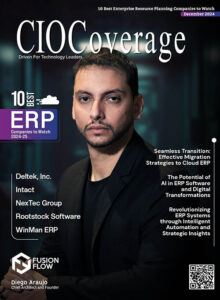 In today’s digital-first business environment, cloud computing has become essential for expanding businesses to stay agile, scalable, and cost-effective. Determining the best cloud strategy can be difficult with so many cloud platforms and hybrid options.
In today’s digital-first business environment, cloud computing has become essential for expanding businesses to stay agile, scalable, and cost-effective. Determining the best cloud strategy can be difficult with so many cloud platforms and hybrid options.
Do you spread workloads and data over various public clouds for redundancy or maintain certain apps and data on-premise? This blog seeks to assist you in answering these crucial questions by understanding multi-cloud and hybrid-cloud approaches. We will explore the considerations that must be made when selecting one strategy over another. This blog aims to provide readers with valuable insights and guidance that will assist them in determining the optimal cloud computing path for their specific business requirements and objectives.
Understanding Cloud Computing Strategies
Cloud computing has become indispensable for businesses of all sizes for scalability, flexibility, and cost savings. Cloud computing is the on-demand supply of IT services such as servers, storage, databases, networking, analytics, and more through the Internet with pay-as-you-go pricing.
Instead of sustaining costly on-premise infrastructure with high upfront costs and limited scalability, cloud services offer a highly elastic and pay-per-use pricing model. It has allowed companies to rapidly scale up or down in response to fluctuating requirements, avoid overprovisioning, and eliminate hardware refreshes. The cloud has also accelerated innovation by providing developers access to nearly unlimited computing power for testing new ideas.
Within cloud computing, there are a variety of deployment and management strategies for cloud resources. The two main approaches are:
- Multi-Cloud – This involves concurrently utilizing multiple cloud platforms from different vendors. For example, using Amazon Web Services for storage and computing in conjunction with Microsoft Azure for analytics and AI-related workloads. A multi-cloud strategy offers redundancy and protects against vendor lock-in.
- Hybrid Cloud – With a hybrid cloud, companies keep some workloads and data on-premises within their private infrastructure while integrating cloud platforms for other applications. It enables the use of public clouds while maintaining security and control over sensitive workloads.
Choosing the Right Cloud Strategy
Several important factors must be examined to make an informed decision. Given below are some of the primary considerations that influence cloud strategy selection:
- Cost
When deciding between multi-cloud and hybrid cloud strategies, cost is an important factor to consider. While a hybrid strategy requires upfront expenses to maintain some infrastructure on-premise, it can provide long-term cost savings by migrating workload processing to cloud platforms where companies only pay for the resources they consume.
However, a multi-cloud model eliminates the need for costly on-site hardware but increases the difficulty of consolidating invoicing from multiple cloud vendors. It provides optimum flexibility through usage-based pricing and the ability to optimize costs by executing specific workload types with the most cost-effective provider.
- Cloud-first vs. Multi-Cloud
Whether a company has a cloud-first mentality or must maintain control over some internal systems significantly impacts choosing between a multi-cloud or hybrid cloud strategy. Organizations with a strong desire to leverage flexibility and innovation through cloud services will likely adopt a multi-cloud strategy to take full advantage of the scalability, agility, and pay-as-you-go cost structure this offers.
Those with legacy IT infrastructure, stringent governance policies, or sensitive workloads requiring stringent security may feel more at ease with a hybrid strategy that allows them to selectively choose which applications and data are migrated off-premise while retaining critical systems on-site.
- Reliability
When choosing a cloud strategy, the dependability of operations and services is another crucial factor. A multi-cloud strategy has distinct advantages in this area, as distributing workloads and data across multiple vendors helps avoid vendor lock-in and potential disruptions. If one provider experiences issues, responsibilities can seamlessly failover to another platform. However, attaining consistent performance and connectivity across multiple clouds complicates management.
Meanwhile, a hybrid model provides the highest levels of availability for mission-critical systems hosted on highly reliable local infrastructure while leveraging cloud infrastructure for less essential workloads that are more fault-tolerant disruptions.
- Performance
On-demand, public clouds can provide immense processing capacity and scalability. However, for latency-sensitive applications such as high-frequency trading, a hybrid or private cloud approach may provide an advantage in assuring consistent low response times.
A multi-cloud strategy is appropriate for the majority of workload types. Still, it requires thorough consideration of each provider’s capabilities to select the optimal performing option for each use case.
- Workload Audit
Companies must comprehensively audit all applications and associated data across their infrastructure to determine the most effective cloud strategy. This assessment considers integration requirements, regulatory obligations, usage patterns, and data gravity to determine cloud readiness for each workload. Based on the identified classification, the audit then coordinates the allocation of resources between on-premise infrastructure, public clouds, or a combination based on the identified classification.
- Security
While most cloud platforms provide robust security controls, some sensitive workloads involving personal data, intellectual property, or compliance with industry regulations may require more stringent on-premise governance and access restrictions. A hybrid model permits the maintenance of stringent security and supervision for such systems along with public cloud resources, but integrating policies across environments increases operational complexity.
- Training Needs
Transitioning to new cloud-based models necessitates investing in personnel to ensure they possess the skills to manage emergent technologies and platforms. The scope of this training program and budgets and timelines influence the adoption rate; hybrid deployment may require less adaptation than multi-cloud. This aspect of organizational change management must be considered when selecting a cloud strategy.
Select a Reliable Partner to Assist in Building Optimal Cloud Strategy
Ultimately, selecting the optimal cloud computing strategy is determined by a company’s specific objectives, risk tolerance, and IT infrastructure. A hybrid model offers the best of both worlds by preserving control over critical systems while leveraging the scalability and efficiency of the cloud. On the other hand, a multi-cloud strategy maximizes flexibility via cloud-first operations. Moreover, a multi-cloud strategy is recommended to avoid vendor lock-in and diversify the potential points of failure.














